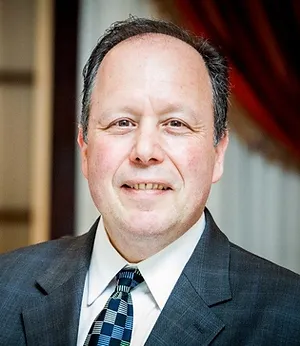
Avrum Lapin, President, The Lapin Group
One year ago I posted an article that set forth several thoughts that I believed then, and continue to believe, that frame today’s philanthropic marketplace. I am always asked by clients and colleagues about the changes that have occurred in the fluid philanthropic space “since COVID.” I resist launching into an explanation of COVID’s impact, which is complicated because, in my opinion, COVID didn’t really cause changes, just advanced and accelerated them. I would rather respond this way.
Imagine a nearly completed jigsaw puzzle whose pieces were all launched into the air and are falling back to the table – some quickly, some in slow motion. Some pieces are going back to their original positions, many are not. And many remain up in the air falling at a much slower pace. In the midst of this, we still want to solve the puzzle. Similarly in the current philanthropic ecosystem, no matter where the puzzle pieces end up, we need to keep advancing, educating, succeeding, guiding organizations, and getting the job done.
But 2022 was not like 2020 or 2021. It was, in my experience, a year of adjustment, of watching the puzzle pieces continue to fall, manifested as continued realignment in the marketplace, the accelerated transition of generations, shifts in attitudes and trends in giving, and adjustments in nonprofit leadership and operations.
What are the touchstones of where we might be headed in the coming year? Here are my thoughts.
- Take nothing for granted
The past year has been a volatile one in so many ways. Nonprofits have adjusted to intensive due diligence, a less certain giving environment, and endowments that have likely been unable to spin off the kind of income that they were expecting. Individual and institutional donors have adjusted to unpredictable financial markets that have caused them to make decisions more conservatively and rely more than ever on the “business case” in addition to the value proposition and Case for Giving.
While the core values have not changed and what motivates people to give largely remains constant – that giving is a passionate act and charitable intent is most often innate and not learned there are tactical differences. How you present your fundable items today is different than it has been in the past and is still advancing. This is a year of transition in what will likely be followed by several more years of adjustment.
You have opportunities to make things happen and shape the narrative. Do not expect the marketplace to come to you.
- Engage your Studies and Assessments smartly
In the 2010’s there was a determined step away from doing assessment and studies.
Nonprofits believed that they understood their constituents and communities and saw the investment of time and expense into a Pre-Campaign Study or Assessment as unnecessary. “We know our people, why pay someone else to tell us what is right in front of us?”
From the side of the interviewee – the prospective donor, leader, or influencer – the Pre-Campaign Assessment was an imposition. The nonprofit can do the research and produce the same data and background.
Not anymore. I encourage serious nonprofits to continue to return to the Assessment and Pre-Campaign Study as a necessary tool to understand the role of an organization in a geographic or functional community. The marketplace is in a period of change and transition and has to realign and readjust, not just through (very necessary) empirical data obtained through wealth research software and the algorithms that drive the data, but the human intelligence that is so important to fundraising success.
This is not to say assessments should be done exactly as they once were, which led to their decrease in popularity. Do the Assessments quickly, involve the right people, and make it about more than just the money. Do not make assumptions and then use the Assessment to validate them. Be prepared for a Study to take you in a different trajectory, directing you to do something that you did not consider earlier, or at least a window into other options and paths to achievement.
- Lean into the Competition
The philanthropic marketplace has become hyper-competitive. More nonprofits are vying for funding in a volatile marketplace where rules are more fluid and things look a little different. We have all seen it and experienced it over the past year. Bottom line…it is a good thing. If engaged productively and not defensively, competition makes us better and sharper and more prone to success. It makes us think more strategically and dig deeper into the fundamentals of our organizations. It causes us to look at prospective results and their impact – punctuated by the importance noted above on gathering information and less “shooting from the hip.” We need to focus on implementing our fundraising initiatives and campaigns with a determined focus on results not just process.
This type of activity moves at the pace of its slowest actor. Nonprofits can no longer afford accommodating the internal complications and bureaucracies of who needs to be involved v. what needs to be accomplished and how best to get there. We all recognize that internal processes must be clear and fine-tuned, fair, and engaging. But they must also be focused, crisp, sharp and crystal clear in messaging and presentation so that they can be heard in the competitive environment. Embrace the competition; do not bemoan it.
- Get people involved
In a competitive world, if prospective donors connect to your nonprofit, they will give more. The notion that was prevalent in earlier years of making everything short and bereft of details and that “smart” donors would make smart business decisions is being replaced by truly smart donors making good choices based on information. That is why we are determined advocates of an open, transparent, and easy to understand Business Case alongside the passionate value proposition and Case for Giving. To make it easy not only to understand, but to comprehend the full meaning and impact of a philanthropic initiative and the investment required to make it happen.
In How We Give Now, the initial report of the Giving Commission, which was chartered by my colleagues at the Giving Institute, the results of a focus group that asked participants to define “how do I give to make the world a better place?,” making a financial contribution and volunteering time received responses of equal frequency, both approximately 16% (HWGN, page 20). These were the two most frequent answers. I suspect that this approach and this answer would be repeated again today.
- Exercise Financial Transparency and Good Governance –Enough said.
In conclusion, and going back to the puzzle pieces, I am not 100% sure what things will look like at the end of 2023. What I do know is that we need to keep a close eye on the puzzle pieces as they hover, and when and where they land. We need to anticipate and be proactive, understand best practice and how it is best implemented in todays’ framework, focus on results and not process, and be prepared to lead.
I suspect that the months and years ahead will be replete with opportunities. We need to be alert enough and smart enough to capture them.
Please share your thoughts at www.thelapingroup.com.


